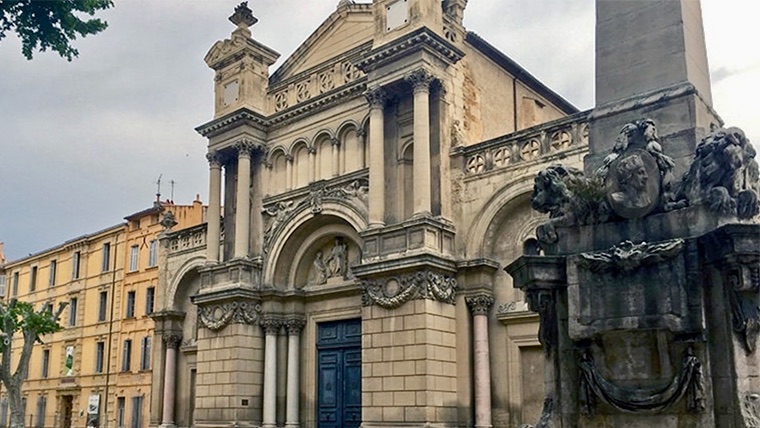The Place des Prêcheurs was created in the 15th-century and served as the center of social life in Aix-en-Provence prior to the completion of the Cours Mirabeau in 1651. The Église de la Madeleine looms large over the place (public square), having been a fixture here for over four hundred years.
The Église de la Madeleine was long considered the most beautiful church in all the Bouches du Rhône, and is where native-aixoise and master post-impressionist painter Paul Cézanne was baptized. Over the centuries, the church has benefited from several modernization projects including a new façade in 1860 by architect Henri Revoil. Unfortunately, it was closed to the public in 2006 due to structural instability, and has remained so ever since. The baroque Fontaine des Prêcheurs (visible in foreground at right, above) was added in 1758 by sculptor Jean Pancrace Chastel.
Place des Prêcheurs – A Dark Past
The history of the Place des Prêcheurs as a gathering spot includes a dark past as the site for public executions in the early 1600’s. The methods were often gruesome, ranging from your run-of-the-mill hangings, to the condemned being burned alive, decapitated, having limbs severed and even being tied to a wheel to break their joints until death. Fun stuff.
A lot has changed since then, thankfully. Restoration of the Église de la Madeleine resumed a few years ago, and work was then extended outward to convert the large common area from an aging parking lot to a pedestrian-only activity zone (sans executions). The Place des Prêcheurs is one of three adjoining squares (places) that were renovated during an extensive improvement project, with work completed in the summer of 2019.

